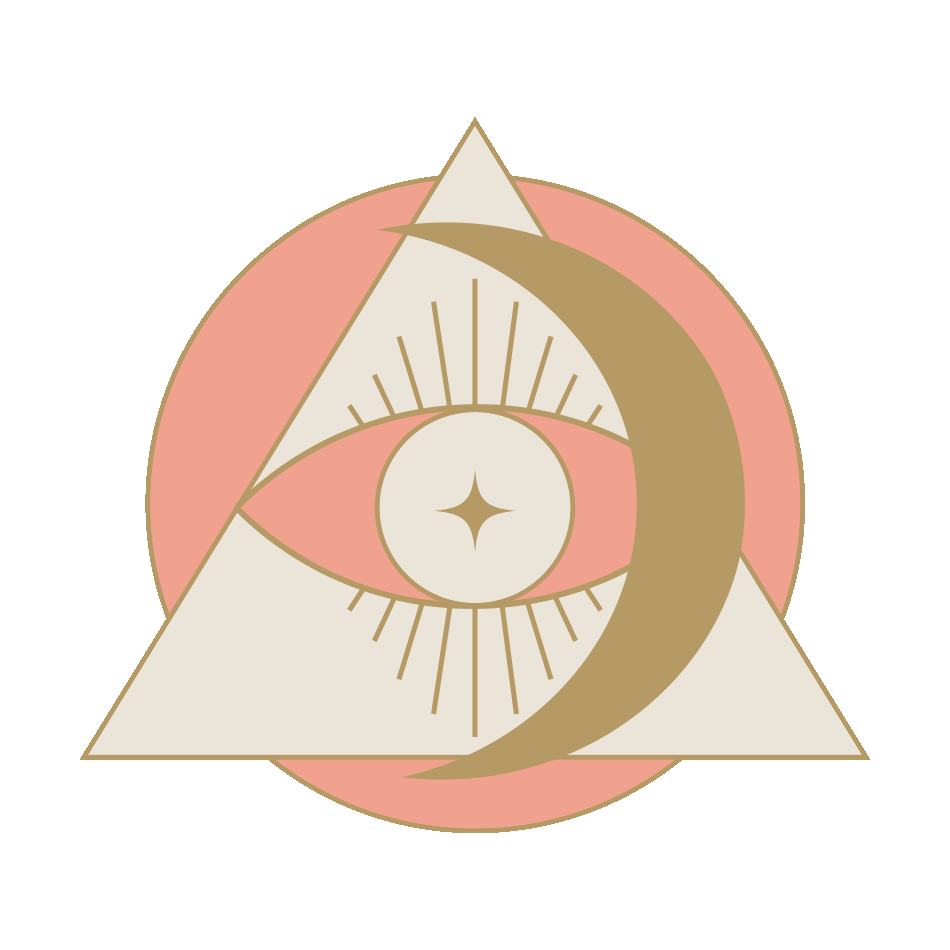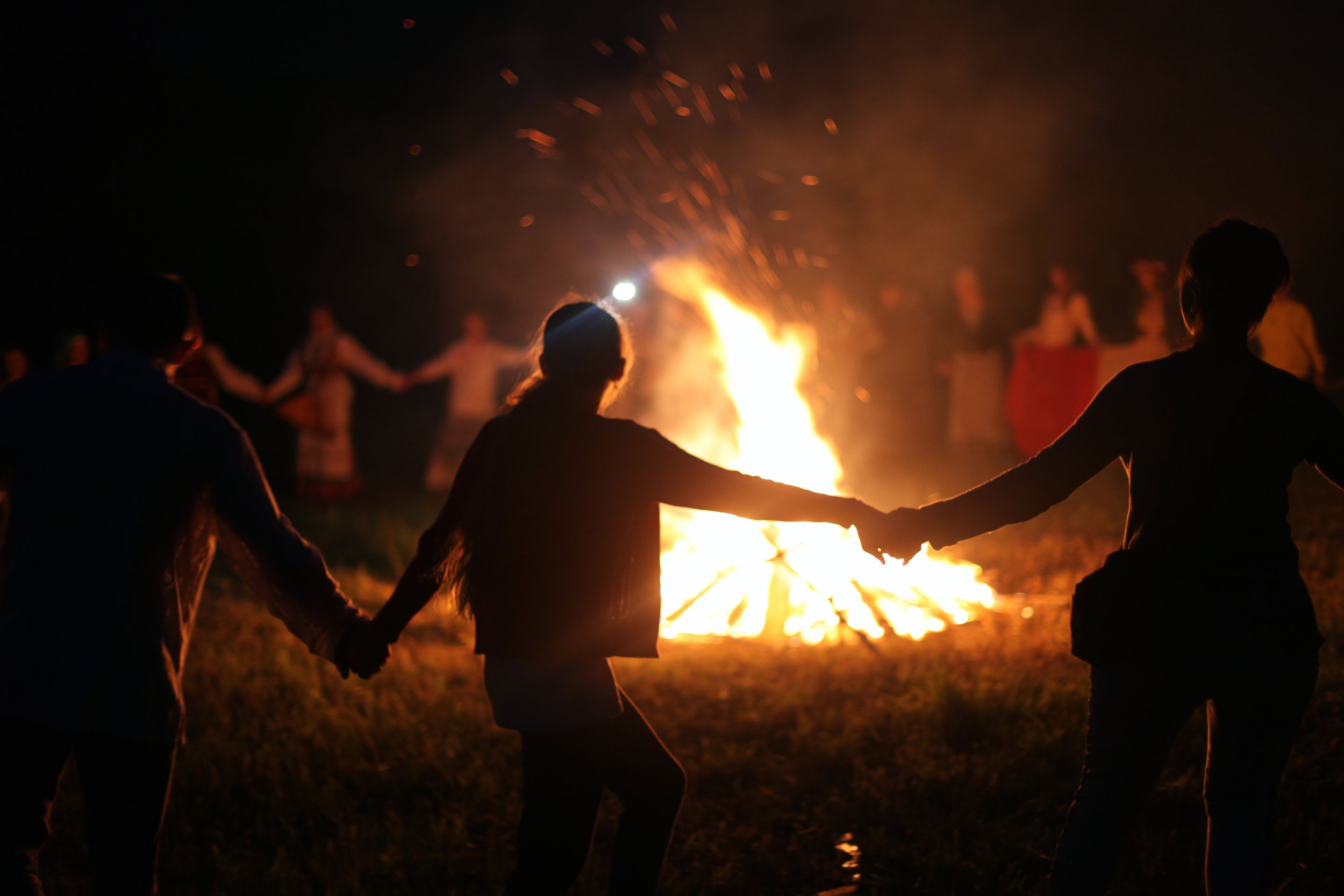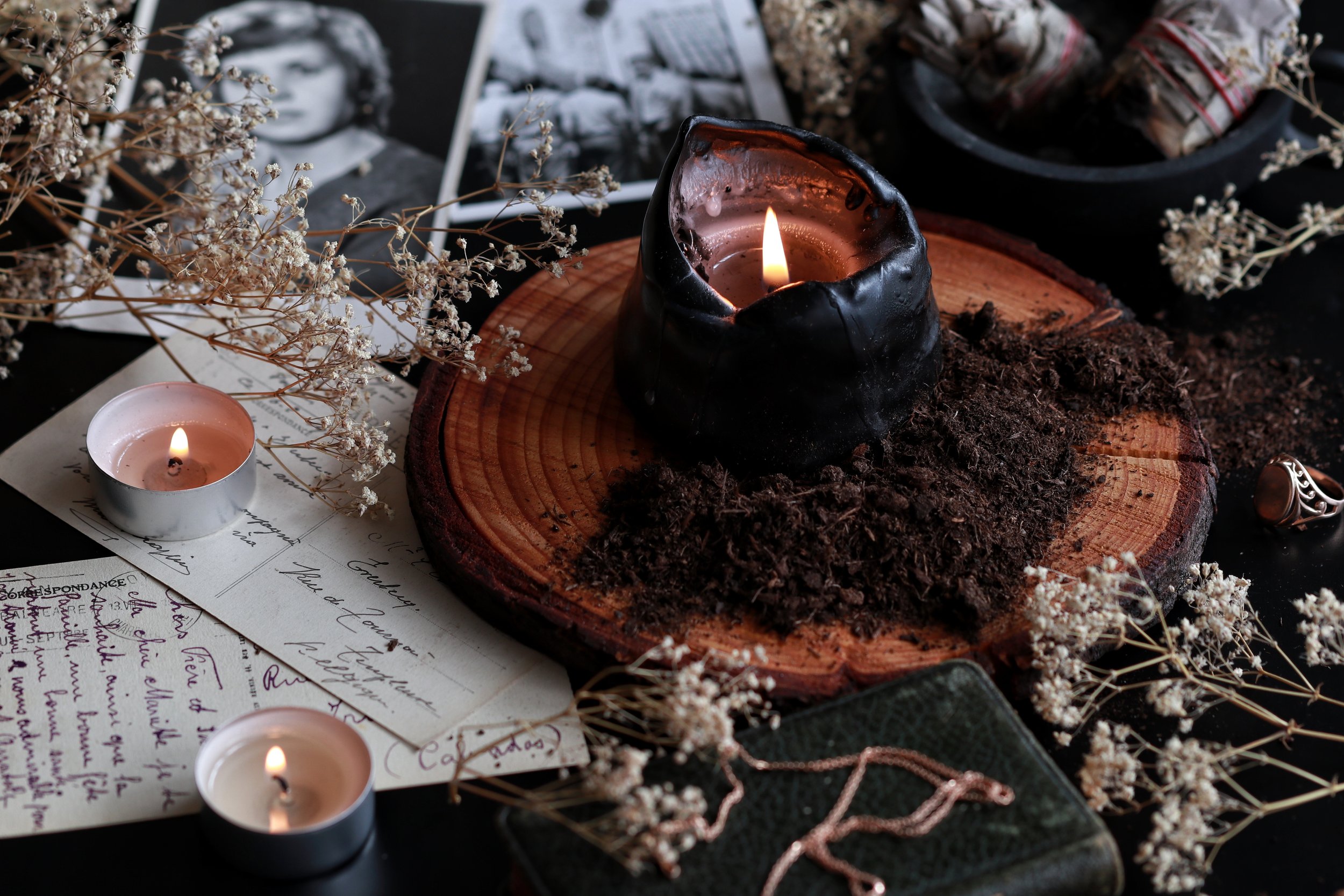The ancient legend of Samhain
Words - Holly Westwood
‘The farther we’ve gotten from the magic and mystery of our past, the more we’ve come to need Halloween’. - Paula Curan
Like me, you may be confused about what we are celebrating on the 31st October. Is it Halloween? Dia de Muertos? All Saints Eve? Feast of the Dead? The answer is yes, it is all of them. But here at Temple and the Moon, we love a good origin story. So for this years October event, we’re going to take it back to the Pagan classic: Samhain.
So that we’re clear, Samhain and Halloween are not the same thing. Pronounced ‘Sow’ain’, this Celtic festival honours the ancestors who came before us, celebrates the dead with dignity and makes the living consider their place in this world and the next. In a way, it actually has more in common with the present-day Dia de Muertos than our western version of Halloween. A connection with those who have passed through this earth before us is made during this time as the veil between the spiritual world and our living world is at its thinnest, making communication between the two the easiest it will be all year. This may sound scary to our modern ears, but to the Pagans, death was simply another part of life and not to be feared. Writer Lucy Corkhills states it simply, ‘The fact that Samhain became Halloween – a day for getting dressed up in our most frightening and ghoulish costumes – means we mostly forget to mark this time of year with a deep, intuitive respect for the cycles of life’.
The ancient legend of Samhain begins with the Celts and how they marked the four quarterly fire festivals. As it took place in the middle of the year between autumn equinox and winter solstice, Samhain soon became the most important of the four. Fire was at the heart of the festival. Families lit fires in their homes and left them to burn while the harvest was gathered. After the gathering was complete, people met with Druid priests. Under the priest’s guidance, a large wheel sparked flames to ignite a fire that was to be shared by all by being brought back to their homes to relight their own hearths. This continued for three days and three nights as a mandatory celebration. People were required to show themselves and prove their participation to their local kings or community leaders, failing to do so would result in angering the gods and thus divine punishment.
The barrier separating the living world from the after world was broken down at this time meaning that the dead were expected to cross over back into the living world. In some versions of this history, those crossing over were ancestors who were respected and honoured as dearly departed souls. In this case, loved ones were invited to join the living at celebratory feasts in their honour. In other retellings of Samhain, pagans dressed as animals or monsters in order to trick the dead and save themselves from being kidnapped and taken over to the other side. These are the origins of our modern Halloween costumes and sweet consumption.
The focus of Samhain is upon reflection and recognition. We reflect on the year that has passed and recognise our place in the world. In our modern world we are disconnected from the harvest and its symbolic meaning, but use Samhain to remember the end of the cycle of birth and growth, it is a point of death and through death are we reborn. Only in the darkness is the abundance of all new potential ripe and ready to be re-sewn. Light your own fire at home on this night and gaze into the flickering flame to experience feelings of peace, hope and a sense of connection with our ancestors who only had fire to light their world when the dark was closing in. Take time this weekend to look around and see the world for all the magic it holds.


